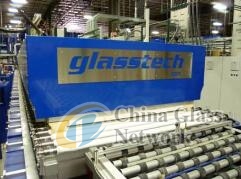Post Time:Mar 27,2018Classify:Industry NewsView:1430
Glasstech’s DBX-T backlite fabrication technology is an innovative, energy efficient glass bending and tempering system that can process complex shapes to tight tolerances with excellent optics.

Glasstech’s latest state-of-the-art backlite fabrication technology DBX-T has been embraced by industry with multiple systems now in operation around the world. The DBX-T System is an innovative, energy efficient glass bending and tempering system that can process complex shapes to tight tolerances with excellent optics. DBX typically has 30 percent better transmitted optics on complex shaped glass when compared to other processes. The DBX-T is also a high capacity system and in its highest capacity configuration, can process complex backlites at cycle rates as low as 10 seconds, which lowers the operating cost to manufacture a backlite.
Glasstech’s External Press Bending System has been expanded and can be configured to produce all glazings for a motor vehicle. A single system can produce fully tempered glass for backlites, sidelites and sunroofs; heat strengthened glass for laminated sidelites or laminated roof lites, or; low stress glass suitable for automotive windshields. The EPB is an innovative, highly versatile glass bending system that satisfies the automotive OEM demand for tighter surface tolerances with superior optical quality, while also meeting the glass processor’s need for greater productivity, economical tooling and energy conservation. The conversion between different modes, i.e., fully tempered, heat strengthened or low stress, is accomplished with tooling and the control system. With Glasstech’s proprietary Smart Convection™ option, the EPB is capable of processing glass with today’s high performance coatings.
Glasstech’s AGI System can inspect any type of fabricated glass, including deeply tinted parts, flat or highly curved shapes, or partially painted parts.
There are two versions of the AGI System available, In-line and Lab. With the In-line system, the system is located downstream of the tempering and/or laminating/autoclave line. It detects the size and shape of the glass and positions it properly for inspection. For the In-Line system, a new capability can be incorporated to inspect windshields for sub mm flaws generally from contamination in the laminate or PVB. From the inspection, it will send a pass/fail signal to downstream conveyors for proper handling. With the Lab version, the glass is manually loaded into the instrument, and then the result is displayed on the computer screen.
In either case, the system can store the results to the computers’ hard drive or other network location.
The results can be loaded on any remote computer system with Glasstech software for further analysis.
The system can be placed anywhere in the manufacturing facility, as it is unaffected by plant ambient light, dust or vibration.
Source: www.glassonline.comAuthor: shangyi
PrevSMC and Nihon Yamamura Glass: joint venture gets OK to expand
LiSEC helps Uyut Stil to produce IG units in ‘Comfort and Style’Next